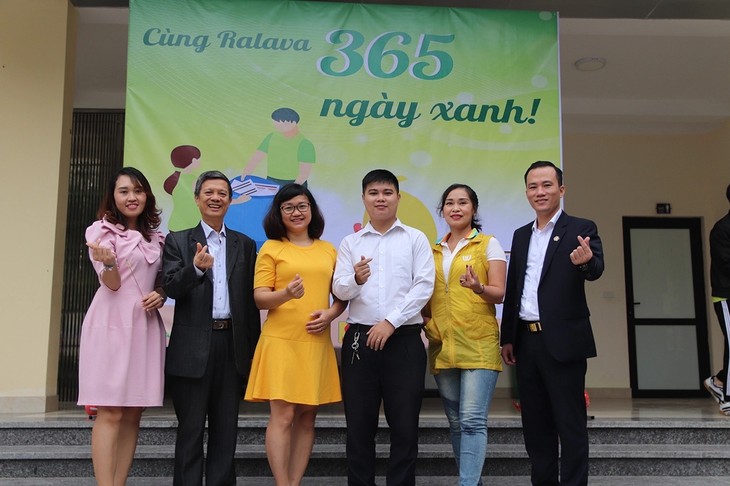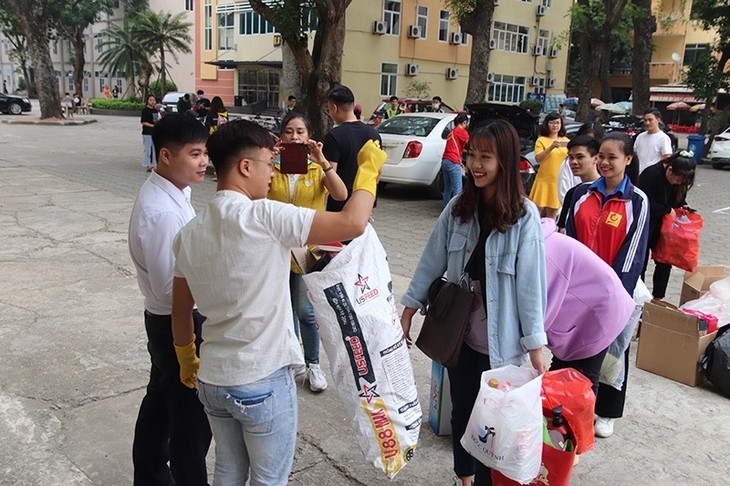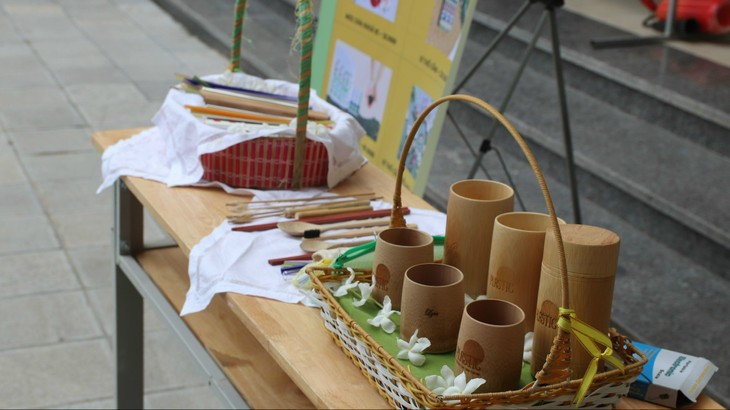(VOVWORLD) - “Garbage is not worthless”, with this idea, Dr Vuong Thi Lan Anh, lecturer at the Faculty of Chemical Technology, Hanoi University of Industry, has launched the Ralava + solution, with the goal of helping Hanoi solve its trash problem. By dealing with garbage wisely, people can separate waste from the source and recycle what is useful from the garbage.
The Ralava + solution has been deployed since September 2018, and stands for the phrase “Trash is gold”. For Dr Lan Anh, waste management in the 4.0 industry must be different from the traditional method.
"The idea of sorting garbage and solving problems related to urban waste came from the day I returned from Russia in 2012. On the way from the airport, I saw that the two sides of Hanoi's streets were flooded with garbage bags. With a major in environmental engineering, I saw that this problem was definitely solvable and really must be solved. After ten years, the Ralava+ solution has been completed, and I believe that it can be fully realized with the help of the whole community," said Dr Lan Anh.
 Dr. Vuong Thi Lan Anh (third from left) at the Green 365 Day Ralava Program. (Photo: VOV) Dr. Vuong Thi Lan Anh (third from left) at the Green 365 Day Ralava Program. (Photo: VOV) |
In order to help people access and effectively classify waste at its source, over the years, the Ralava+ solution has set up many garbage collection points in residential areas, apartments, schools, offices, and parks so that users can bring their recyclables to Waste Bank or Garbage Bank locations.
Dr Lan Anh has also built a mobile app called Ralava on iOS and Android platforms. Users can update the number of points they have stored, search for the nearest garbage collection place, update useful information about recycling instructions, exchange information, buy and sell eco-friendly products, update discount codes of partners in the Ralava ecosystem and offer to redeem and receive money from accumulated points.
"On the current Ralava app, users will be able to register an account. Each time they bring garbage to the collection point, it will be weighed to be converted into money on the app. It’s like a currency on an e-wallet, which can be spent in supermarkets, or exchanged for gifts right on the app,” said Lan Anh.
At any time, people can see the number of points they have achieved, and also see the nearest collection points to bring garbage to or even send request on the app to send people to collect garbage if it is 5kg or more.”
There are also blogs and forums on the Ralava app for users to share and spread information about resources, or how to sort garbage.
Many schools in Hanoi have participated in the Ralava+ solution, including Hanoi University of Industry, Newton Goldmark inter-school, My Dinh 2 Secondary School, Khuong Thuong Secondary School, and Ngoc Khanh Primary School. The solution has inspired students and achieved more results than expected.
The Faculty of Chemical Technology, Hanoi University of Industry has coordinated with the Youth Union to implement the program "Together with RALAVA 365 Green Days", in order to raise community awareness and mobilize lecturers, students and local people to participate in garbage classification.
 A garbage collection point in Hanoi. (Photo: VOV) A garbage collection point in Hanoi. (Photo: VOV) |
Nguyen Thi Hang, a student majoring in Environmental Engineering at Hanoi University of Industry has joined the program "Together with RALAVA 365 Green Days".
"I participate in the role of assisting in sorting and exchanging gifts. After sorting, there will be a team accumulating points and converting them into gifts or money. I find this to be a very practical project, helping people understand how to classify garbage and protect the environment. More over, the solution also helps to solve economic problems," said Hang.
 Small gifts for students. (Photo: VOV) Small gifts for students. (Photo: VOV) |
Teacher Tran Mai Hien, Head of the Department of Natural Sciences, Newton Goldmark Middle School, said that joining Ralava+ not only motivates the school and teachers, but also the students themselves to make positive changes.
"When the students collect garbage and change it into gift, they feel rewarding, no matter how small the gift is, Indeed, in the early stages of the project, we communicated very well with the children and attracted many students in all grades. Through that, I also see the responsibility of the children to preserve the quality of life, promote a greener and more beautiful living environment, and toconsider garbage a resource," said Hien.